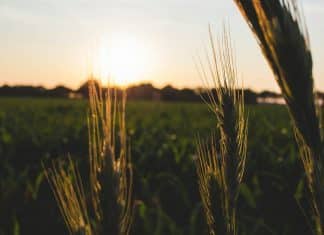Estimated reading time: 5 minutes
- Lameness in sows, regardless of the size of the herd, is a significant welfare and economic concern for pork producers.
- Defined as any impairment that causes difficulty in normal locomotion, lameness can severely impact sow health, reproductive performance, and overall farm profitability.
- Lameness in sows can stem from various causes, broadly categorised into infectious, non-infectious, and environmental factors. These include joint and bone disorders, such as osteochondrosis, arthritis, and fractures, as well as claw lesions, such as hoof cracks and sole ulcers.
- Beyond the welfare implications, lameness in commercial sow herds has substantial economic consequences such as reduced reproductive efficiency and increased culling rates.
- Managing lameness in commercial sow herds requires a holistic approach aimed at addressing various factors that influence joint and hoof health.
Lameness in sows, regardless of the size of the herd, is a significant welfare and economic concern for pork producers. Defined as any impairment that causes difficulty in normal locomotion, lameness can severely impact sow health, reproductive performance, and overall farm profitability. While there are multiple factors that contribute to lameness, effective management strategies play a crucial role in both prevention and mitigation of this condition.
Lameness in sows can stem from various causes, broadly categorised into infectious, non-infectious, and environmental factors. These include joint and bone disorders, such as osteochondrosis, arthritis, and fractures, as well as claw lesions, such as hoof cracks and sole ulcers. The prevalence of lameness varies among farms. It is one of the most common reasons for the involuntary culling of sows due to factors other than productivity.
Learn more about Strategies for managing seasonal infertility in pigs here.
Key management practices
Housing and flooring: The type of housing and flooring systems used in sow management is pivotal in determining the prevalence of lameness. Concrete floors, while durable and easy to clean, can contribute to joint and hoof problems if not adequately designed or managed.
Where concrete is used, it must be maintained in a clean and dry state, by regular mechanical scraping to remove manure and urine. Washing should be done properly between housing cycles, and the pen must be dry before a sow enters for her next cycle of stay. In more informal settings, constant exposure to wet conditions may negatively affect hoof integrity.
Feeding and nutrition: Proper nutrition is essential for maintaining healthy bone and joint integrity in sows. Inadequate levels of minerals such as calcium and phosphorus can lead to skeletal problems. This is especially true where the calcium to phosphorous ratio is not adequately balanced, leading to spinal and other fractures. Improper feeding practices that result in obesity can exacerbate joint stress.
Where by-product and waste feeding is implemented, the aforementioned is of specific concern. Regular monitoring of body condition scores and adjusting feeding strategies accordingly can help prevent excessive weight gain and subsequent lameness issues.
Exercise and movement: Encouraging regular exercise and movement among sows is crucial for joint health. Sows housed in restrictive environments may experience muscle atrophy and joint stiffness, increasing their susceptibility to lameness. The current South African National Standards (SANS) guidelines state that a sow should not be in a stall for more than half of her pregnancy.
Providing adequate space for sows to move freely can promote musculoskeletal health and reduce lameness incidence. Environmental enrichment can help to encourage more movement during gestation.
Breeding and gestation: Where natural mating is practiced, improper mating techniques or aggressive mating behaviours can lead to injuries that affect locomotion. In addition, the management of gestation crates or pens can influence joint health; providing comfortable resting areas and ensuring proper space allocation can mitigate stress and reduce lameness risks during these stages. When sows are moved between sections, care must be taken to ensure that the risk of slipping is reduced.
Monitoring and treatment: Routine health monitoring and timely intervention are essential components of managing lameness in sow herds. Early detection of lameness symptoms, such as changes in gait or reluctance to move, allows for prompt treatment. Veterinary oversight and adherence to treatment protocols for joint inflammation, hoof lesions, or other related conditions are crucial to preventing lameness from becoming chronic or affecting reproductive performance.
Biosecurity, disease prevention: Infectious diseases can contribute significantly to lameness in sow herds. Implementing stringent biosecurity measures, such as quarantine protocols for new animals, routine vaccination programmes, and regular cleaning and disinfection of facilities, helps prevent the spread of pathogens that can lead to joint infections or other lameness-related issues.
Economic impact, sustainability: Beyond the welfare implications, lameness in commercial sow herds has substantial economic consequences. Reduced reproductive efficiency, increased culling rates, and higher veterinary costs all contribute to lower profitability for producers. Implementing effective management practices that prioritise sow health and welfare not only improves production efficiency, but also enhances the overall sustainability of pork producing operations.
Conclusion
Managing lameness in commercial sow herds requires a holistic approach aimed at addressing various factors that influence joint and hoof health. From optimising housing and flooring systems to ensuring proper nutrition, encouraging movement, disease prevention, and proactive management strategies – all play a pivotal role in reducing the incidence and severity of lameness.
By prioritising sow welfare and implementing evidence-based practices, pork producers can mitigate the impact of lameness, improve herd health, and enhance the long-term sustainability of their operations. Looking after the sow is looking after the future of the piggery. – By Dr Dorothea Mostert, veterinarian, CS Vet
For enquiries, phone Dr Dorothea Mostert on 012 460 9385 or visit www.csvet.co.za.






